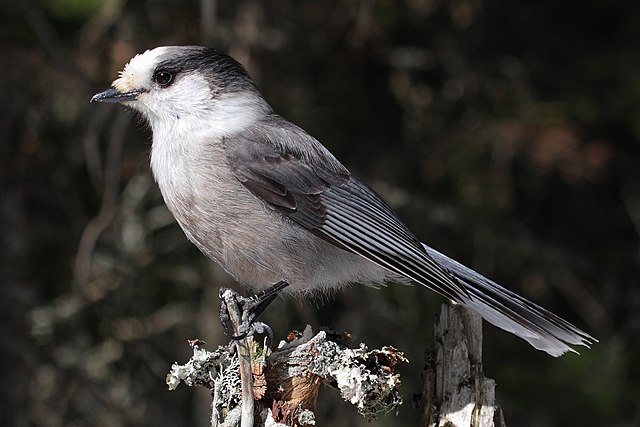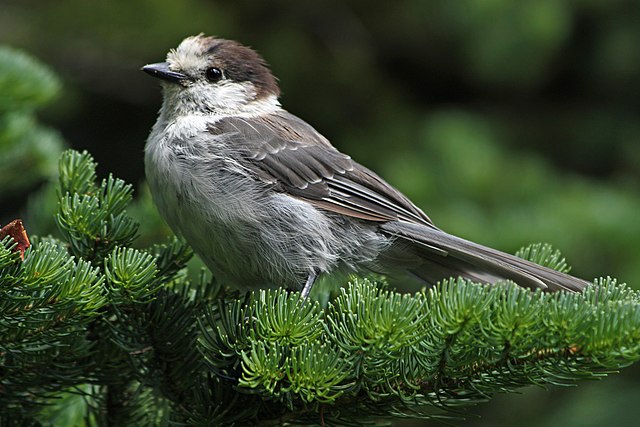The Canada jay, also known as the gray jay, grey jay, camp robber, or whisky jack, is a passerine bird of the family Corvidae. It is found in boreal forests of North America north to the tree line, and in the Rocky Mountains subalpine zone south to New Mexico and Arizona. A fairly large songbird, the Canada jay has pale grey underparts, darker grey upperparts, and a grey-white head with a darker grey nape. It is one of three members of the genus Perisoreus, a genus more closely related to the magpie genus Cyanopica than to other birds known as jays. The Canada jay itself has nine recognized subspecies.
Canada jay
Subspecies P. c. capitalis, Grand Tetons, Wyoming
Subspecies P. c. capitalis (left) and P. c. obscurus (right); illustration by Keulemans, 1877
Perisoreus canadensis obscurus in Mount Rainier National Park
The genus Perisoreus is a very small genus of jays from the Boreal regions of North America and Eurasia from Scandinavia to the Asian seaboard. An isolated species also occurs in north-western Sichuan of China. They belong to the Passerine order of birds in the family Corvidae. Species of Perisoreus jays are most closely related to the genus Cyanopica.
Perisoreus
Image: Perisoreus canadensis pair
Image: Siberian Jay (Perisoreus infaustus) (13667845783)
Image: Perisoreus internigrans







